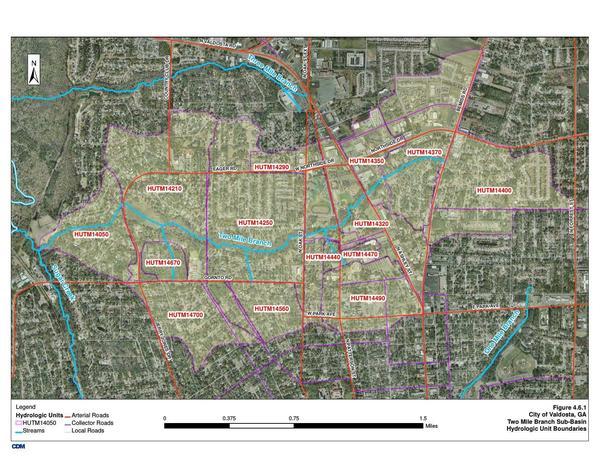Thanks to new Valdosta Utilities Director Darryl Muse, we think we have communication channels clarified between Valdosta and WWALS, and we have a proposal for the state of Georgia to do what Florida and Alabama are already doing to prevent communication issues in the future.
Especially since we expected paddlers from Atlanta and Gainesville, Florida, at the Saturday October 14 Withlacoochee outing and Rivers Alive Nankin Landing Cleanup in conjunction witih KLVB, I called upstream the Thursday before to check with Valdosta Utilities, and was told no spills in October.
Much to our surprise after the outing, WWALS E.D. Gretchen Quarterman noticed this online: Thomas Lynn, Valdosta Daily Times, 13 October 2017, Sewer blockage causes city pill,
A sewer line blockage caused nearly 4,000 gallons of sewage to spill earlier in the week.
The City of Valdosta Utilities Department staff responded to a sanitary sewer spill at the 400 block of Connell Road around noon Thursday, according to city officials Friday.

Hydrologic Unit Boundaries, Two Mile Branch Sub-Basin, Valdosta Master Stormwater Management Plan.
That’s in the top center edge of the Two Mile Branch watershed.
Noon was an hour before I called; keep reading for what happened.
The VDT story continues:
City staff removed a blockage from the sewer line that caused about 3,475 gallons of sewer to spill into a storm drain that drains into Two Mile Branch, a 3.27-mile stream segment, according to a city press release.
Two Mile Branch is upstream from where I had informed the City we would be paddling on the Withlacoochee River, from Nankin Landing to Madison Highway.
For sure, probably the river water would have diluted a spill of that size before it got that far down the river. But I don’t like giving inaccurate information to paddlers whose safety and health are at stake.
It turns out word hadn’t gotten around inside the city that fast to the person I called, and when it did, Valdosta Utilities was scrambling to fix the problem. I know this because I explained the situation in email to the City, and got a response from Valdosta City Manager Larry Hanson, who promised to look into the matter and provide an explanation.
As he wrote, “Facts do matter.” That’s what people want: the facts. Well, that and no more spills from Valdosta. Better communications will eventually dispell the widespread perception downstream that Valdosta spills all the time and is covering it up. Yes, I know that sounds harsh, but that is what people downstream believe, and only continued prompt notification to everybody of spills, combined with fewer spills, will eventually clear up that perception.
The followup was in the form of a very congenial meeting a week later with new Valdosta Utilities Director Darryl Muse, me, and WWALS Science Committee Chair Tom Potter.
I think that meeting has re-established better communications between WWALS and Valdosta Utilities, or at least started the process to do so. The new Utilities Director promised a followup by email to publish with this writeup about the crossed and now uncrossed signals. Here it is, dated October 25, 2017:
Good Morning Mr. Quarterman. I have met with my staff and determined the best source for information as it relates to performance of the City’s sewer collection system is Mr. Scott Fowler, Environmental Manager for the City of Valdosta. Typically he is one of the first contacted by internal or external sources to relay information related to sewer incidents. He can be contacted via email at SFowler@ValdostaCity.com or via office phone at 229.259.3592. Please use Mr. Fowler as your source for information relating to the performance of the City of Valdosta’s sewer collection system.
I have since talked with Scott Fowler, and further discussions are in process.
Among the topics under discussion is Valdosta possibly helping persuade the Georgia Environmental Protection Division (GA-EPD) to publish pollution notices on a web page, with sign-up for email notices. With that, I would have gotten a notice Friday, and there would have been no crossed signals.
Not to mention the only way I found out about Tifton, Quitman, and Lowndes County spilling during Irma (and Moultrie not spilling) was by calling each of them one by one. Which is ridiculous: there are 69 permited wastewater treatment facilities in the Suwannee River Basin in Georgia. GA-EPD gets spill reports from each of them, so there should be no need for anybody to have to call them all every day.
Florida and Alabama already do it, and Georgia can, too.
I also invited both Muse and Fowler to the November 11, 2017, One Mile Branch cleanup on the VSU campus, especially so we can go to a nearby site where Valdosta spilled several times before, and they can explain all the good works they’ve done to prevent such spills in the future.
-jsq, John S. Quarterman, Suwannee RIVERKEEPER®
You can join this fun and work by becoming a WWALS member today!
Short Link:
